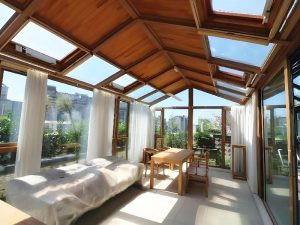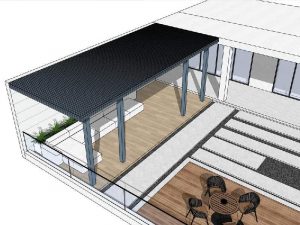In regions with heavy rain and strong winds, choosing a gazebo involves considering its wind resistance capabilities rather than just its shade and waterproof features. A gazebo that can withstand high wind speeds ensures not only the smooth continuation of your outdoor activities but also the safety of your property and people.

This article explores gazebos’ wind resistance. These practical tips will help you make an informed decision when selecting a wind-resistant gazebo, allowing you to enjoy your outdoor time even in windy conditions. (This article has been reviewed by product design experts from LIDA OUTDOOR, a factory in China that specializes in making patio gazebos and awnings.)
How Much Wind Can a Gazebo Withstand?
The key factor in keeping a gazebo stable in windy environments is its wind resistance. Wind resistance refers to the pressure a gazebo can withstand when facing the wind, determined by the gazebo’s material, structural design, and anchoring methods. These factors collectively influence a gazebo’s wind performance.

Although some products do not specify their wind resistance rating or have not undergone professional wind speed tests, we can still assess their wind performance by understanding these influencing factors. Properly installed portable gazebos can withstand wind speeds of 20-40 mph (Beaufort scale 4 to 5). Hardtop gazebos typically have better wind resistance, reaching up to 50-80 mph (Beaufort scale 6 to 9).
Also Read: How to Choose Hardtop Gazebos for Snow and Wind?
Top manufacturers can produce portable gazebos that withstand up to level 7 winds (wind speeds of 52-62 mph). Heavy-duty gazebos designed for long-term use and industrial-grade gazebos suitable for commercial events usually offer high wind resistance. High-quality wind-resistant gazebos from reputable manufacturers can endure winds up to level 10 (wind speeds of 100 mph).
If you are unfamiliar with wind speeds, refer to the table below.
| Beaufort Number | Wind Speed (MPH) | Land Conditions |
| 0 | 0-2 | Smoke rises vertically |
| 1 | 2-6 | Direction shown by smoke drift but not by wind vanes |
| 2 | 7-12 | The wind felt on face; leaves rustle; wind vane moved by the wind |
| 3 | 13-19 | Leaves and small twigs in constant motion; light flags extended |
| 4 | 20-30 | Raises dust and loose paper; small branches moved |
| 5 | 31-40 | Small trees in leaf begin to sway; crested wavelets form on inland waters |
| 6 | 41-51 | Large branches in motion; whistling heard in telegraph wires; umbrellas used with difficulty |
| 7 | 52-62 | Whole trees in motion; inconvenience felt when walking against the wind |
| 8 | 63-75 | Twigs break off trees; generally impedes progress |
| 9 | 76-87 | Slight structural damage (chimney pots and slates removed) |
| 10 | 88-103 | Seldom experienced inland; trees uprooted; considerable structural damage |
| 11 | 104-117 | Very rarely experienced; accompanied by widespread damage |
| 12 | ≥118 | Devastation |
By understanding wind resistance and following these guidelines, you can choose a gazebo that ensures safety and durability even in strong wind conditions.
Features of High Wind Resistant Gazebos
Previously, we mentioned that the factors influencing a gazebo’s wind resistance are material, structural design, and anchoring methods. When choosing a high-quality wind-resistant gazebo, consider these three aspects. Let’s explore each factor in detail.
1. The Strength of Material and Frame
Building a gazebo is like constructing a house; sturdy materials ensure stability and durability. Just as a reinforced concrete house is stronger than a thatched hut, using robust materials significantly enhances a gazebo’s wind resistance.
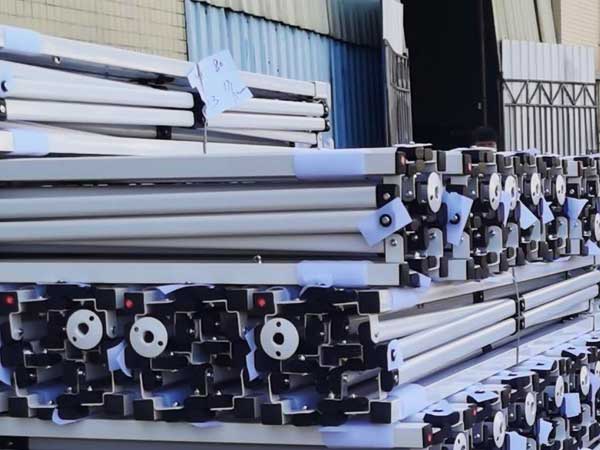
Ideal materials include galvanized steel with high corrosion resistance, lightweight yet sturdy aluminum alloy, and high-density polyethylene (HDPE). These materials help prevent deformation and collapse, providing better support and stability in strong winds. By choosing these high-quality materials, you can ensure your gazebo remains stable in windy conditions.
2. The Design of Structure of Shape
Why do houses have various structural designs? Different functional needs lead to different structural designs. Similarly, the design elements of a gazebo significantly impact its wind resistance.
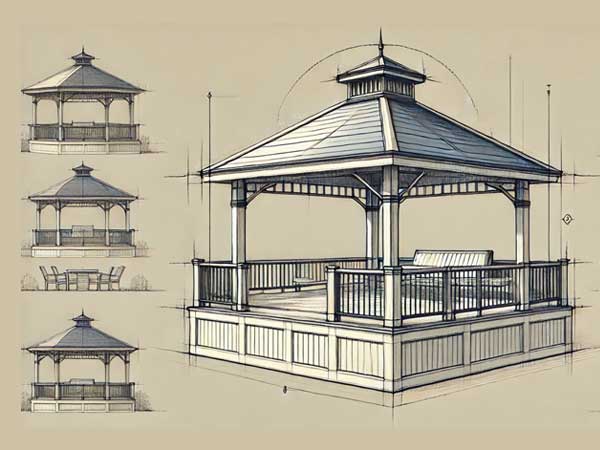
For example, a sloped roof design can effectively disperse wind forces, reducing the direct impact on the structure. Reinforced brackets and other design features can also enhance the gazebo’s stability in windy weather. By understanding these design characteristics, you can choose a gazebo better suited to withstand strong winds, ensuring it remains stable and reliable in adverse weather conditions.
3. Anchoring and Stability
Choosing the correct anchoring method is crucial for improving a gazebo’s wind resistance. Using ground anchors, sandbags, and wind straps can enhance the gazebo’s stability. Below, we will discuss some anchoring techniques to help you properly install and use your gazebo in windy environments.

How to Improve Your Gazebo’s Wind Resistance
If you have already purchased a gazebo, here are 14 tips to enhance its wind resistance, focusing on installation, maintenance, and emergency measures.
1. Install in a Suitable Location
Before installation, choose a sheltered location for your gazebo, such as the side of a building or near tall trees. These natural windbreaks can reduce the direct impact of wind on the gazebo.
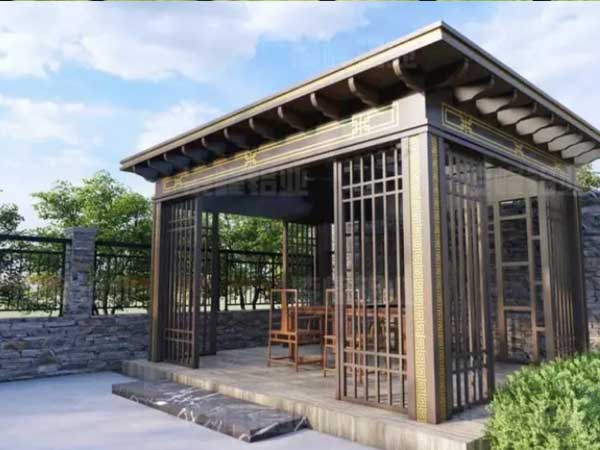
2. Use Ground Anchors
Use specialized ground anchors to secure the gazebo. For maximum stability, insert the anchors deeply into the ground. Depending on the ground type, you can choose spiral anchors or peg anchors.

3. Add Weight to the Gazebo
Place sandbags or water bags at the four corners and key support points of the gazebo to add weight and stability, preventing it from being blown over in strong winds.

4. Use Wind Straps
Secure one end of the wind strap to the gazebo frame and the other end to surrounding fixed objects such as trees or railings, or anchor it to the ground. Wind straps must remain taut to enhance stability.
5. Adjust the Gazebo Height
If your gazebo is adjustable, lower its height during windy weather to reduce the surface area exposed to the wind, increasing its wind resistance.
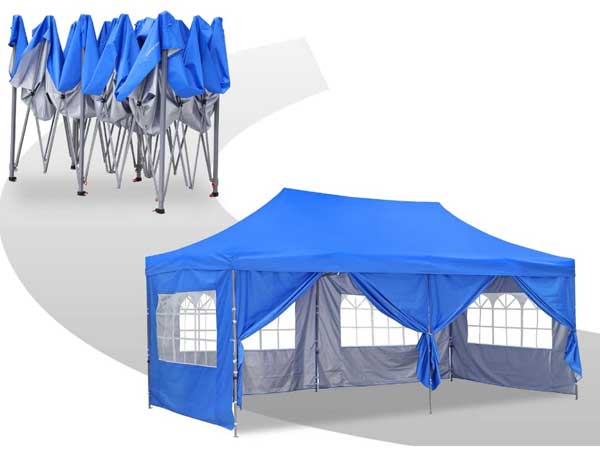
6. Choose Solid Support Points
Concrete provides more stability than grass. If the ground is soft or unsuitable for anchors, consider adding a patio as a heavy-duty base and securing the gazebo with bolts. If the budget is limited, dig a deep hole at the anchor points, fill it with cement, and insert bolts to ensure stability.
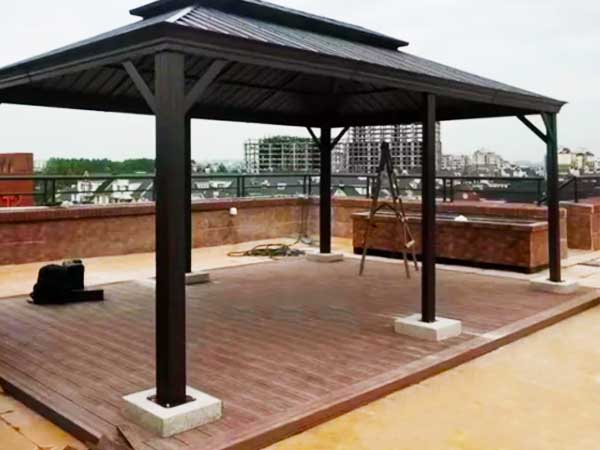
7. Connect Multiple Gazebos
Connect multiple gazebos for increased stability at medium—to large outdoor events. Use ropes or connectors to join the legs of adjacent gazebos. The more gazebos connected, the greater the total weight, reducing the likelihood of being blown over.
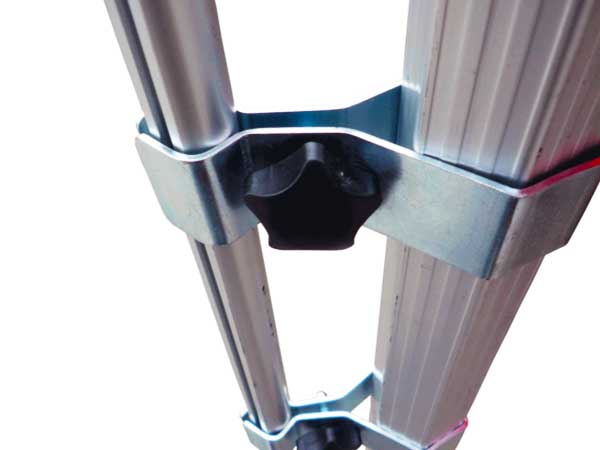
8. Use Effective Anchoring Techniques
As previously mentioned, ground anchors, sandbags, and wind straps can be used in combination to secure your gazebo. It is best to anchor symmetrically to ensure an even distribution of forces on the support points. Combining multiple anchoring methods can significantly enhance the gazebo’s stability, making it difficult to be blown over even in strong winds.

9. Regularly Check the Gazebo
Check all connection points, frames, and fabrics regularly for looseness or damage. Repair or replace parts as needed.
10. Clean and Maintain
During inspections, clean and maintain the gazebo. Remove dust, leaves, and debris. Treat metal parts for rust, wood for rot, and fabric for waterproofing. These maintenance measures extend the gazebo’s lifespan and save costs.
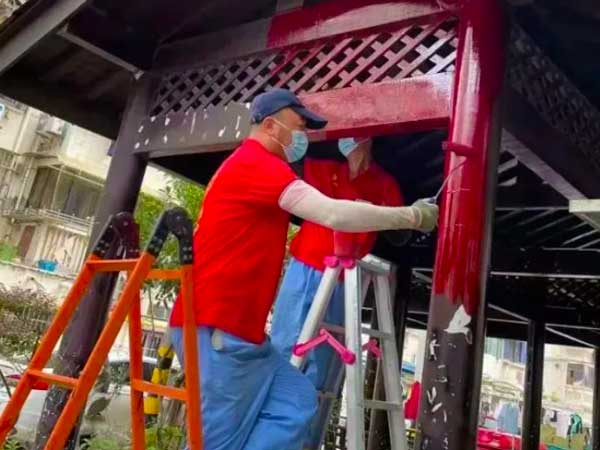
11. Avoid Prolonged Exposure to Extreme Weather
Portable gazebos designed for short-term use should be stored during storms, snow, or hurricanes to prolong their lifespan, even if they can withstand level 7 winds.
12. Seasonal Maintenance
Perform seasonal maintenance based on the weather. For example, if autumn and winter bring storms, add extra anchors to help the gazebo withstand stronger winds.
13. Train Users
If you are a gazebo wholesaler or commercial user, train your staff on the correct installation and anchoring methods to ensure safe and effective use.
14. Monitor Weather Forecasts
Always check the weather forecast before planning outdoor activities. If high winds are predicted, take appropriate windproof measures in advance.
15. Emergency Reinforcement
If you encounter sudden weather changes, temporarily reinforce the gazebo by adding more anchors or weights and using wind straps to ensure stability.
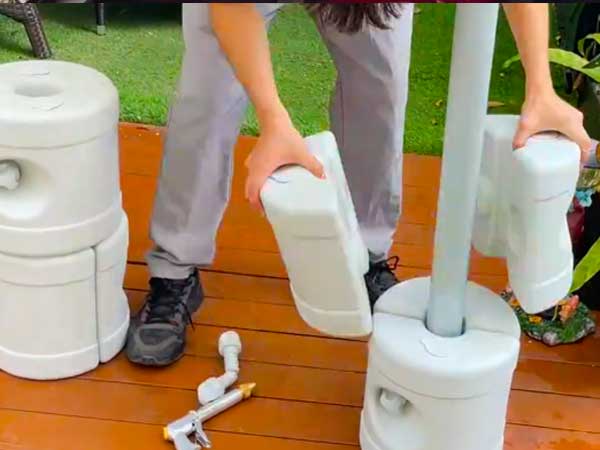
Conclusion
The wind resistance of a gazebo depends not only on its material and structure but also on the user’s installation and anchoring methods. If you live in a windy area, choose a suitable type of gazebo and secure it using the methods mentioned.
For wholesale inquiries of outdoor and patio shade products, contact us for the latest prices. As a Chinese manufacturer with over 20 years of experience, lIDA OUTDOOR offers various high-quality and cost-effective wind-resistant gazebo models.

